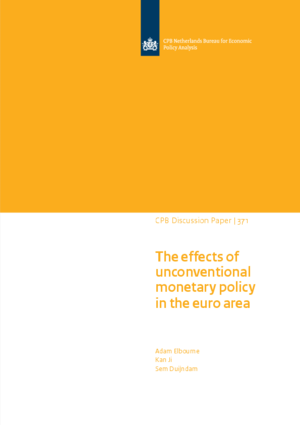The effects of unconventional monetary policy in the euro area
We estimate the effects of unconventional monetary policy shocks on output and inflation in the euro area using data from 2009 to 2016, which covers the period of all of the major unconventional monetary policies that the ECB has used. We employ a two stage estimation strategy: first, we identify unconventional monetary policy shocks in a dedicated euro area level structural vector autoregression (SVAR) model. Subsequently we use these unconventional monetary policy shocks in country level models. By estimating the effects of unconventional monetary policy shocks in the individual countries of the euro area, we aim to shed some light on the most important transmission mechanisms through which unconventional monetary policy works.
Downloads
We find weak evidence that expansionary unconventional monetary policy shocks increase output growth, but the effects on inflation at the aggregate euro area level are economically insignificant. At the individual country level we find a range of responses across the countries in our sample, and those differences in the magnitudes of output responses are consistent with some of the transmission channels that have been proposed for how unconventional monetary policy works. Interestingly, though, we find that healthier banking systems at the start of our sample and lower government debts are associated with larger peak output responses. This is the opposite of what the bank lending channel predicts, which is one of the most important proposed channels. We are not the only authors to have found this, for example Van Dijk and Dubovik (2018) also find no evidence of the bank lending channel when they focus on the effect of the announcement of the ECB’s Asset Purchase Programme in January 2015 on lending rates.
February 2019: Subsequent research (CPB Discussion Paper 391) shows that the technique employed in this discussion paper does not provide reliable estimates of the effects of unconventional monetary policy.

